
Paint peeling off of the basement walls
This is a really common sight in local Delmarva basements. A lot of people paint the basement walls with a thick "waterproofing" paint. The idea is to lock out the moisture and keep the basement dry. The only problem it that the water vapor builds up behind the layer of paint and then pops through. Not only does this look awful, but imagine the cost and effort of painting it over and over again.
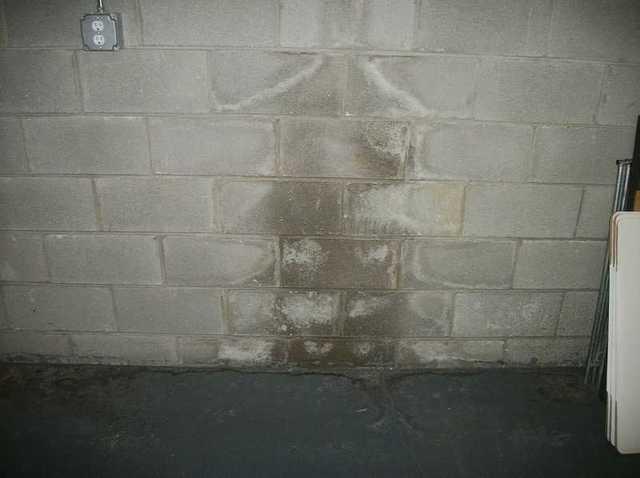
Another sign of water vapor penetrating the basement walls
This is a picture of the white chalky stuff that many people are familiar with on their basement walls. It is often times confused for mold growth. Actually it is just mineral deposits that come through with the water vapor. The biggest thing it tells the inspector is that water vapor is absolutely coming through the wall. So even if his equipment says the humidity is low, (maybe because the weather is nice that time of year), he will know that the humidity has been elevated at some point.

Up close on the white chalky stuff
It looks a little fuzzy, doesn't it? This is probably why so many people think it is mold growing on the basement walls. Many times you can see a sort of Christmas tree pattern on a wall. That is because the concrete blocks are hollow, and when the hollow cores fill with ground water they leak out very slowly. You can see it in this picture, how the stain is from top left to bottom right, just imagine several of these blocks stacked up to make a wall. It would look a little like a tree, right?
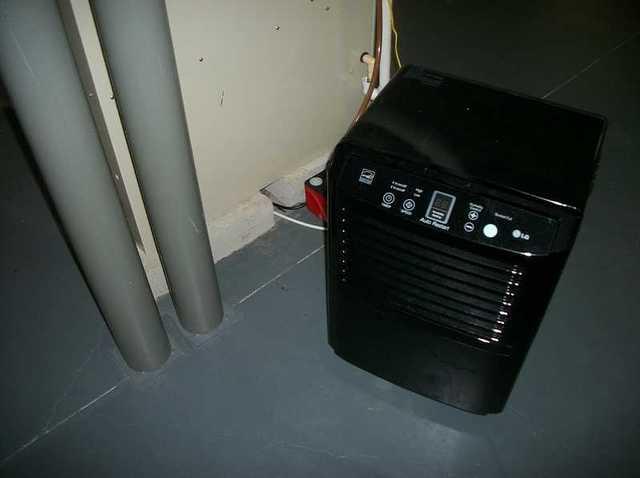
Improper dehumidifier
Many people have these kinds of dehumidifiers in their basements. They are readily available at most hardware stores, but just how good are they? Think about the size of most basements, they are usually massive. Many times a basement is the entire floor plan of the home above, just without the walls. These little dehumidifiers just aren't strong enough to handle that whole space. That means you would need 3 or 4 to even attempt to do the job of a whole house machine like the SaniDry CX. They use more power and do less work, doesn't make a lot of sense.
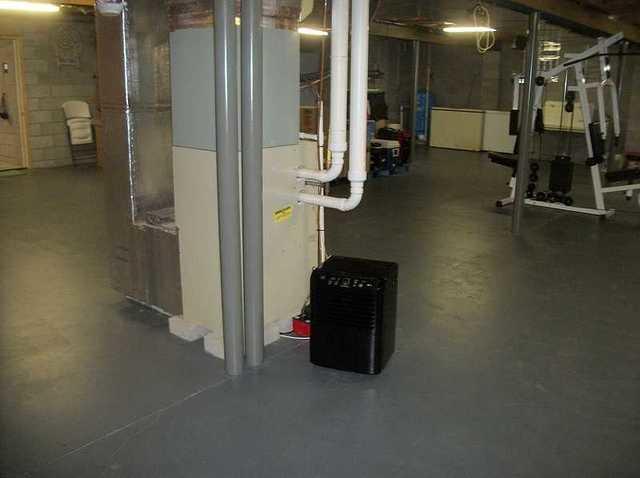
Full size basement
You can see the sheer size of the basement in this picture. There is no way that the small dehumidifier will be able to dry all that air.
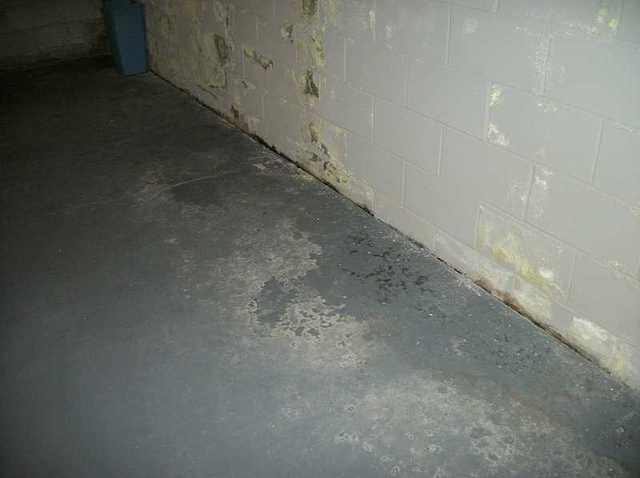
Water stains on the basement floor
Dark stains on the floor are a tell tale sign of flooding or at least leaky basement walls. Once a proper waterproofing system is installed the leaking can be routed to a sump pump.
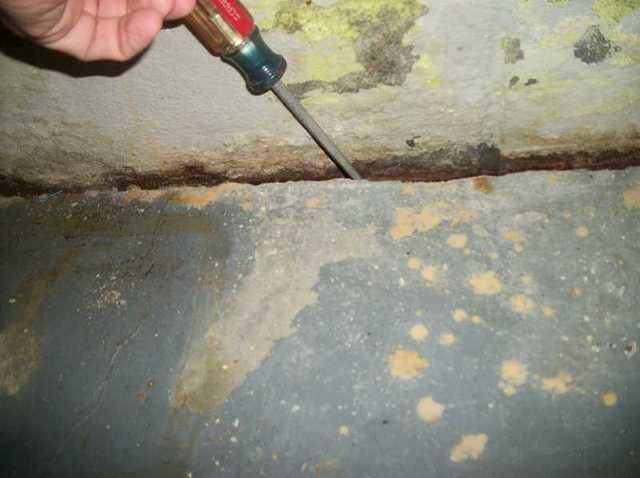
Checking the style of the wall
There are two types of basement walls, the monolithic and the standard. In a monolithic foundation the walls are built directly on top of the floor. In this type of construction the bottom seam of the wall is clearly visible, so the screwdriver in this photo wouldn't be in the crack. In a standard foundation the footer is poured, then the wall, and last the floor. It creates three separate pieces. Therefore, the bottom block on the wall is only partially seen. All of this tells the inspector which type of drainage system is appropriate for your basement.

Double checking the thickness of the floor
Standard basement floors are 4 inches thick and standard concrete blocks are 8 inches high. Therefore, if you can see more than 4 inches of the bottom block there is a good chance that the floor is thinner. This means that adjustments have to be made to the drainage system design. If adjustments are not made there is a chance that the crew could damage the footer, and that is a huge "no-no" since the footer is the main structural support.



